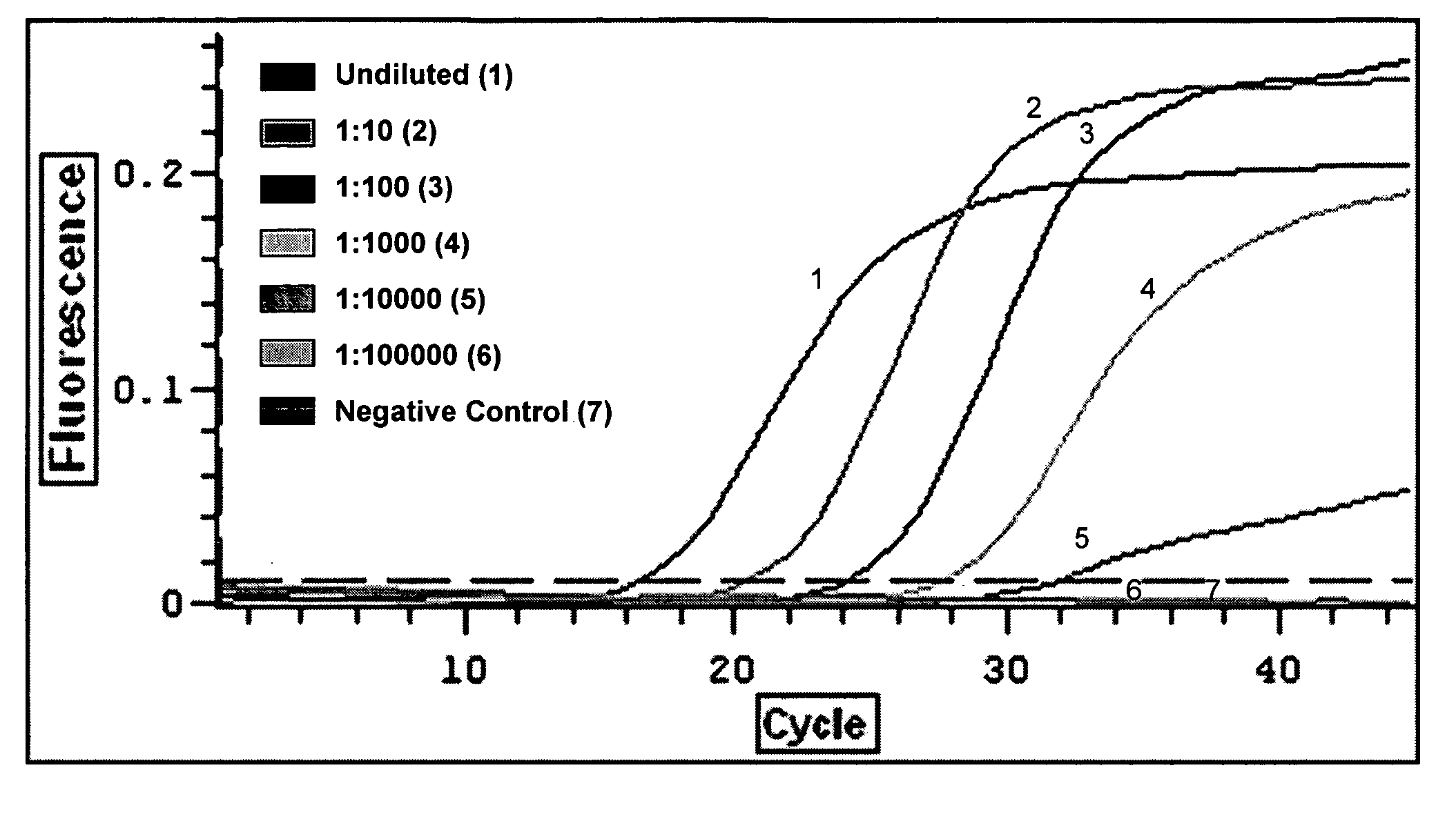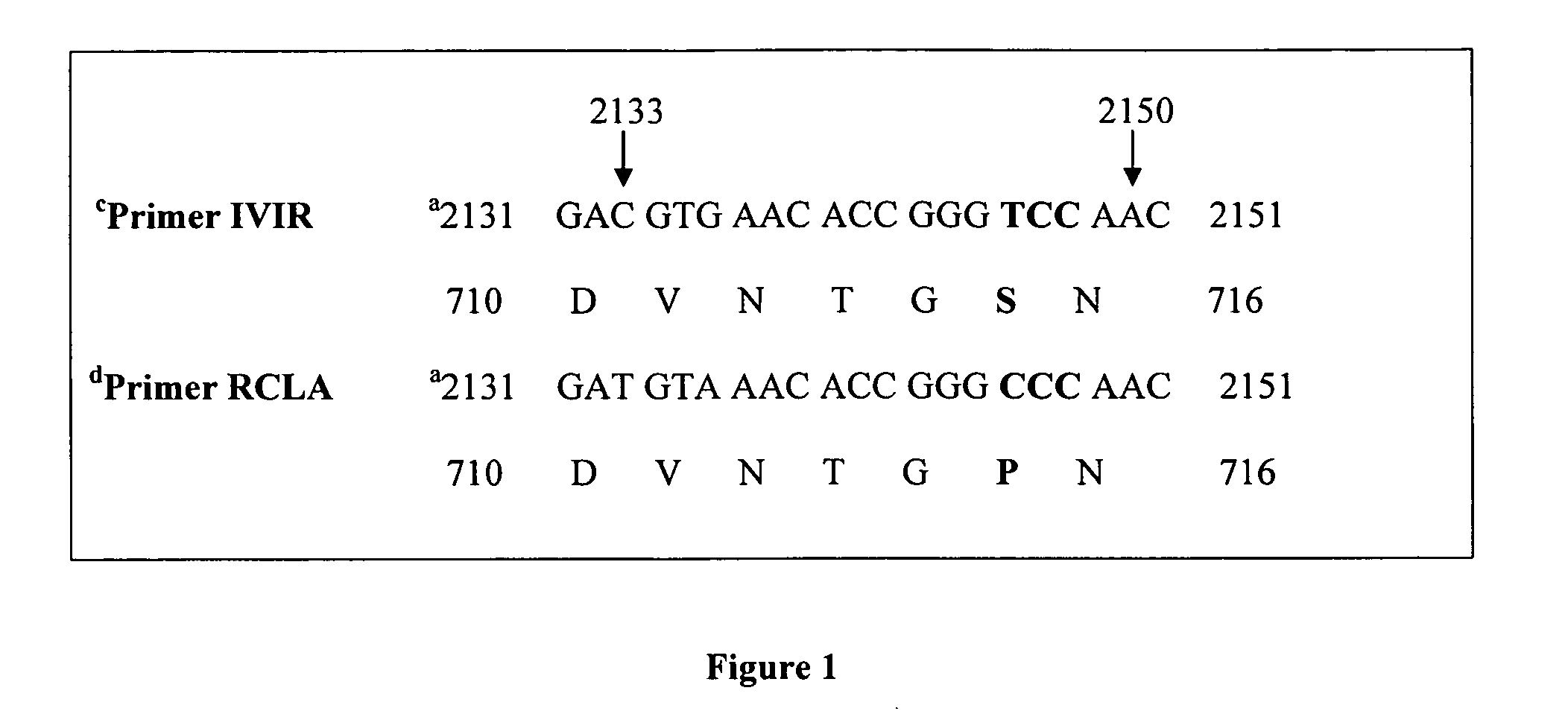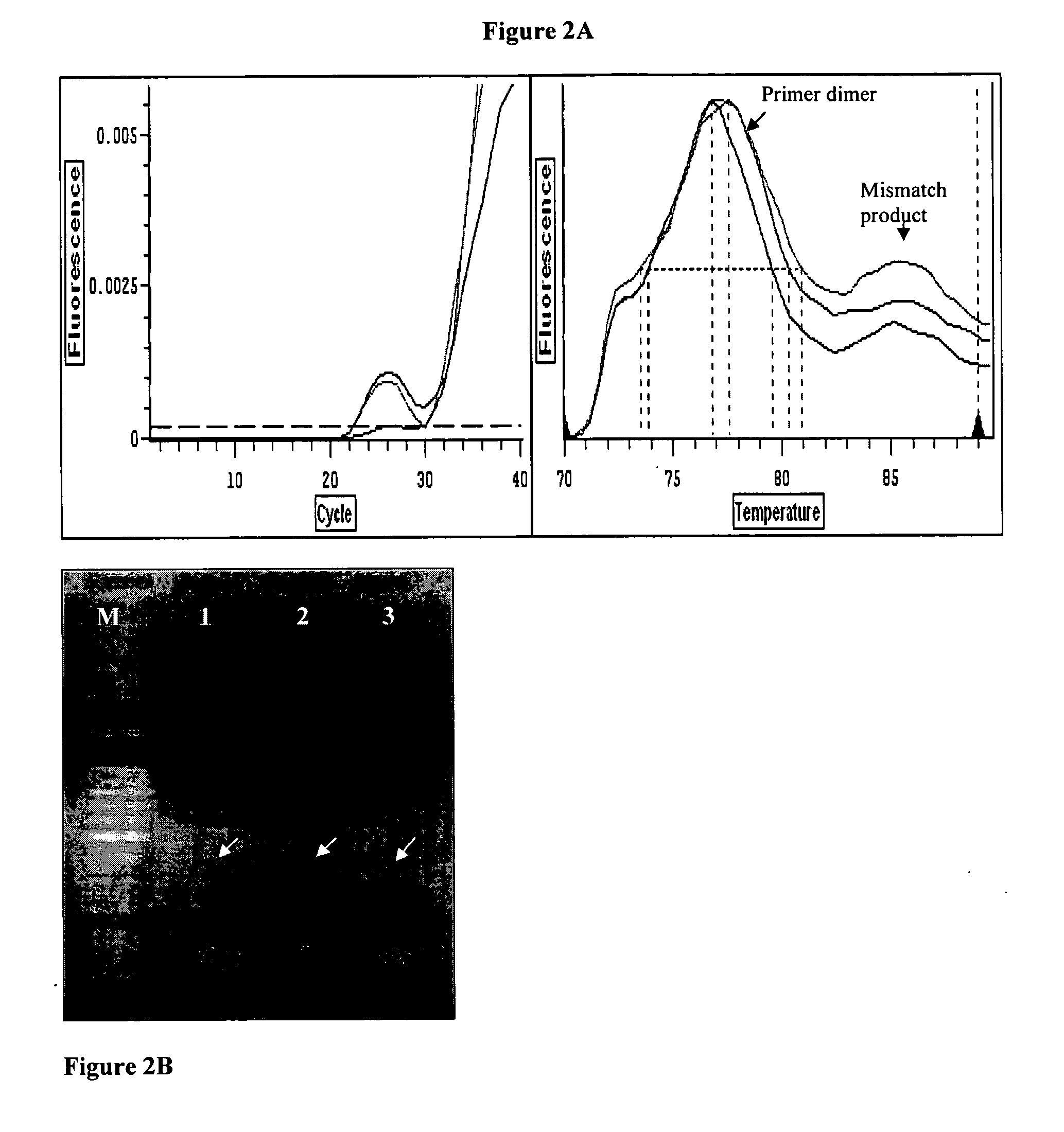Detection and distinguishing infections bursal disease virus (IBDV) strains by molecular biology method
a technology of molecular biology, which is applied in the field of detection and distinguishing infectious bursal disease virus (ibdv) strains by molecular biology method, can solve the problems of difficult to detect variant ibdv in commercial flocks, time-consuming, labor-intensive, and low sensitivity
- Summary
- Abstract
- Description
- Claims
- Application Information
AI Technical Summary
Benefits of technology
Problems solved by technology
Method used
Image
Examples
Embodiment Construction
[0031] The field of the invention is detection of IBDV in homogenate tissue samples using different primer combinations. Total RNA from test sample is reverse transcribed using a pair of conserved primer. The RT product is amplified using different primer combinations where by, different IBDV strains can be differentiated based the detection of Ct and Tm values. Based on these principals, a pair of primer, primers FVVC & RVVC that hybridized to the conserved region are designed and used in RT reaction.
[0032] The RT products are then used as template in cDNA amplification using 2 pairs of primers whereby only the sequences of the reverse primers are different depending on the strains of IBDV; primers IF & IVIR and primers IF & RCLA each are specific to very virulent and vaccine strains of IBDV, respectively. Since the concentration of cDNA influence the specificity of the assay, the optimum of cDNA concentration is optimized. In addition, other parameters including concentration of ...
PUM
| Property | Measurement | Unit |
|---|---|---|
| Tm | aaaaa | aaaaa |
| Tm | aaaaa | aaaaa |
| melting temperature | aaaaa | aaaaa |
Abstract
Description
Claims
Application Information
 Login to View More
Login to View More - R&D Engineer
- R&D Manager
- IP Professional
- Industry Leading Data Capabilities
- Powerful AI technology
- Patent DNA Extraction
Browse by: Latest US Patents, China's latest patents, Technical Efficacy Thesaurus, Application Domain, Technology Topic, Popular Technical Reports.
© 2024 PatSnap. All rights reserved.Legal|Privacy policy|Modern Slavery Act Transparency Statement|Sitemap|About US| Contact US: help@patsnap.com










